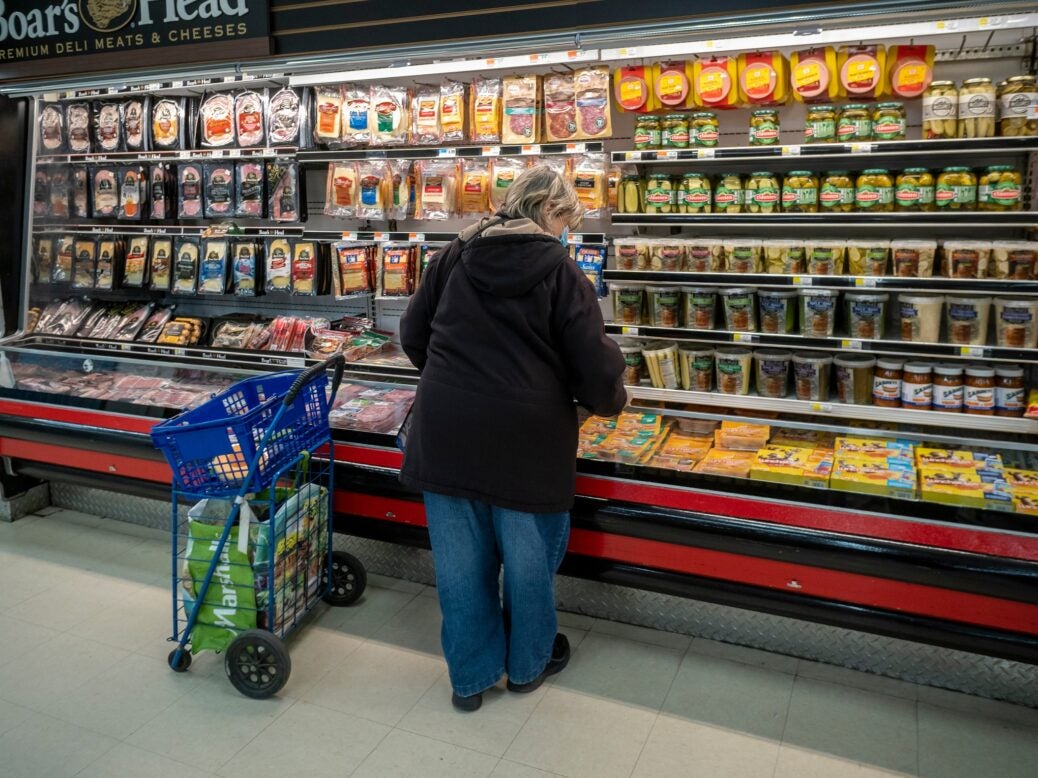
The number of US consumers trading down to private label has risen more than three-fold in a year as inflation erodes household food budgets.
In an annual survey conducted by AllianceBernstein, 70% of participants were choosing lower-priced retailer own-labels over branded foods in August. That was in contrast to 18% a year earlier, likely due to government stimulus payments and pent-up pandemic-linked savings, the US-based asset-management firm said in a report.
While the latest headline US inflation rate eased to 8.3% in August – from 8.5% in July and 9.1% in June – it was higher than the 5.3% in the same month of last year, eroding consumers’ purchasing power.
Of the 1,137 people surveyed, 38% were also switching grocery stores in search of lower prices, with 84% of respondents saying the change was due to inflationary pressures.
“The switch to private label is happening across all income brackets, with most consumers noting a higher frequency of switching to private label,” according to the report, led by senior food analyst Alexia Howard. “Unsurprisingly, the pattern decelerates as income levels rise.”
Many participants cited “negative attitudes towards inflation, stagnant or decreasing incomes and blaming politicians for the worsening macro-economic outlook”, and 48% said rising energy prices were also partly to blame for their change in shopping patterns.
Dried, canned and jarred foods, along with fresh fruit and vegetables, have risen in popularity since last year’s survey. Products being consumed on fewer occasions included bakery, fresh meat and fish, and confectionery, “most likely due to surging prices”, AllianceBernstein said.
Differences in behaviour by age bracket were also identified. “The youngest age group is the most likely to have switched their grocery store outlets, purchased more private-label products and chosen less expensive types of food,” the report read.
“On the other hand, consumers more than 60-years-old are the most concerned with how food affects their health outcomes, which is less of a concern to younger consumers. Both consumer groups claimed raised awareness of nutrition information, with young people focusing on grams of protein, while elderly consumers are more wary of fat levels. All age groups are increasingly concerned with sugar and calorie content.”
Consumers are also paying more attention to health, with only 13% not reading nutrition labels on foods. “Healthy snacking” and fresh produce were considered “on-trend”.
AllianceBernstein said 30% reported eating more healthy snacks, compared to 22% and 18% in the previous two years. “This may be further evidence of a gradual shift to healthier eating over the last several years, likely accelerated by the pandemic-induced increase in health consciousness. This message is further strengthened by snacking on indulgent treats, which were consumed more by 25% of consumers in both 2020 and 2021, yet only 15% in 2022.”
The evidence, AllianceBernstein suggests, supports the “idea that snack companies (and especially healthy snack companies) will continue to perform better over time, while companies that are still anchored in heavily-processed meal-based categories in the centre of the store will remain under pressure”.



